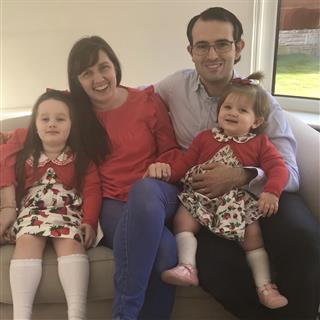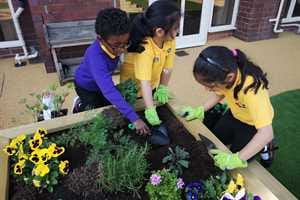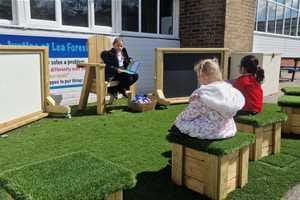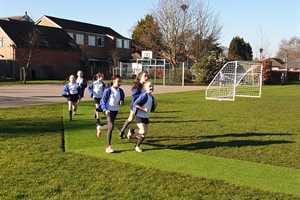
Outdoor Learning and Play
The Benefits of Construction Play in Early Years Children!
Junk model robots, kitchen roll binoculars, towers made from blocks and boxes turned into rocket ships are often familiar sights within early years settings. Construction play can really help to extend children’s ideas and imagination.
.jpg)
What is Construction Play?
Constructive play occurs when children use toys, loose parts or materials to build or create something new.
Successful construction requires various skills such as: planning, drawing, cutting, assembling, moulding, stacking and testing.
The term 'constructive play' is an important stage in the development of skills mentioned in Jean Piaget’s Cognitive Development research.
Constructive play often takes the form of hands-on learning where children are posing questions, testing ideas and making decisions.
When experimenting with a variety of learning materials children explore and discover.
According to Jean Piaget, constructive play is an important stage in the development of skills due to how children are carrying out hands-on learning. Children ae posing questions, testing ideas and making decisions on their own.
Piaget saw constructive play as a transition from functional to symbolic play. Before children begin to construct, they will have explored a range of materials in order to know how to effectively use them.
As children experiment with a variety of learning materials, they naturally explore and discover new parts of knowledge, which helps with their cognitive development and gives them a higher chance of future academic success.
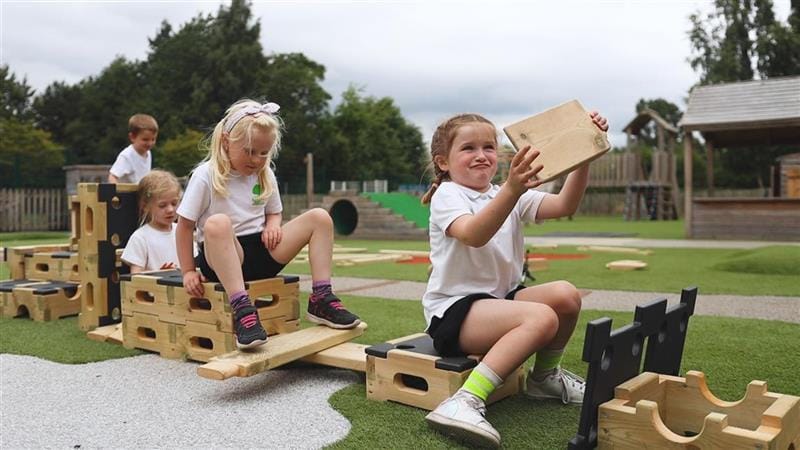
When involved in exploratory play, children use their senses for investigation and discovery. Simple actions will be repeated such as banging blocks together or moving them from one place to another.
This phase helps children to prepare for constructing, which requires more purposeful movements. Children learn to manipulate materials to achieve a desired outcome and can be provided with a great sense of achievement, which is why we developed our construction play range.
How Construction Play Benefits Early Childhood Education
Constructive play benefits early childhood education by helping children to make sense of the world whilst they develop problem solving skills, gross and fine motor skills, cognitive development, social skills, physical development and improve their fine motor development.
.jpg)
Construction play also helps develop the "Exploring and Creating" area from the 7 areas of learning and development taught during EYFS.
Young children often gravitate towards constructive play when given a choice in the classroom. As educators, if we encourage constructive play and enhance our provision it can lead to academic and social success.
Let's have a look at some of the key benefits that construction play provides children and how these benefits are caused and why they are an important thing.
Encourages Collaborative Working
There is definitely something very special when children come together to create.
Often children will work together in pairs or small groups when engaged in construction play. They will learn how to listen listen, the importance of turn-taking, communicate and how to co-operate with members of their team.
All of these small factors will help to improve social skills and give a child a deeper understanding of how to work in a team setting, which can help with preparing children for future social interactions and team environments.
Simple actions such as passing each other the correct pieces of the toy train track allow children to engage with each other and to contribute towards a shared goal.

Tuff Spot Table is the perfect size and shape to encourage collaborative working. Children can sit, stand and crouch around each of the sides and storage boxes containing construction materials are easily stored and accessible underneath.
Construction play doesn’t stop at early years, Pentagon’s Year 6 Leavers Bench encourages children to work together in groups, carefully following instructions, to construct their own useable product.
Develops Language Skills
A child will begin to learn new vocabulary through fun constructive play. When engaged in social interactions, complexity of vocabulary increases and children determine how to respond in appropriate ways.
These simple interactions can speed up language development within the early years, which helps children advance further in academic settings.
Adding clipboards, paper and drawing tools to a construction area allows kids to draw and write about their ideas.
Some learners may like to create their own mini booklets instructing others how to make their construction.
Pupils may voice their ideas to an adult who can scribe or video children’s thoughts which allows other children to create links between spoken and written word.
Children can video each other and if a copy of the recording is made, peers can listen to advice on ‘How to make a police station’.
When children are involved in enjoyable, active learning they use language linked to real-life scenarios and conversations are meaningful. To have a child at an early age develop these types of skills is definitely extraordinary and can only help child development as they grow older.
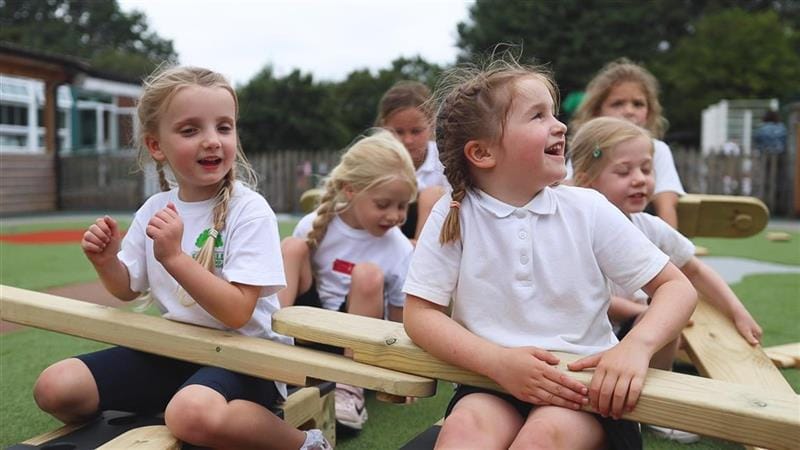
Supports Pupils Learning to Solve Problems
Problem Solving skills are developed in constructive play as children establish which methods give their desired result and which do not.
Children begin to visualise the types of models they would like to make and they learn how to construct using boxes and cardboard whilst making decision about the number of windows or wheels to include.
.jpg)
A child will learn to adapt their approach, take advice, test ideas and reassess. They develop resilience and will learn how to apply these skills to other areas of their lives.
Teachers could even set a task for the class by asking the children to create a certain object (like a car). Provide a picture of a car and let the children bring their creative mindsets! As they explore their available materials, they will naturally develop problem solving skills as they try to understand how they can use said material to create something.
As an adult, all of these skills are vital for any job. When a child engages with construction play, you can watch the development of problem solving skills, knowing that the child will have a head start later in their life.
Excellent for Sparking Creativity
A major advantage of constructive play is that it allows a child to develop creativity. When experimenting with different materials and discovering new uses, possibilities become endless and lateral thinking is encouraged.
Nurturing EYFS children's creativity is highly important and by using construction play, you are effectively having your children engage with creative play too.
Product Spotlight
If you wanted to further the creative aspect of construction play, have a child draw a plan for building a model and then hand it to a group of children. Watch as those children engage with the drawing and try to bring it to life.
Not only will the builders have fun with the task, but the artist will feel a boost in their self esteem as they see their own ideas being bought to life.
Introduces Mathematical Concepts
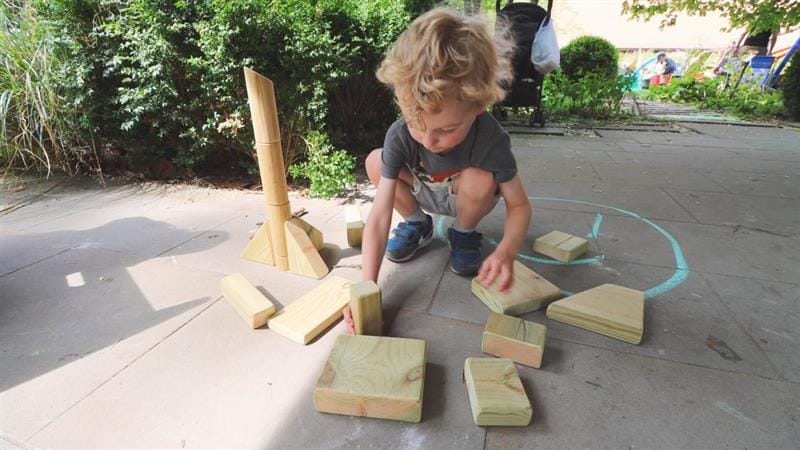
Important mathematical concepts are introduced in construction play. Early years children will begin to use vocabulary linked to spatial reasoning such as below, on top, next to, besides, above.
Pupils may begin to measure their models, talking about how big, long, wide their construction will need to be. An understanding of size can take place in a purposeful context.
Constructive play can also teach children about shapes, sorting, matching and classifying.
Pupils may sort bricks by colour or type when building their zoo. Wooden cylinders may be gathered in one pile whereas cuboids gathered in another to use for different parts of their house construction.
Encouraging children to utilise mathematical concepts at such a young age is amazing, as it will help them understand the importance of planning and how maths helps in everyday life.
Building Blocks Enhances Motor Skills
Kids utilise hand eye coordination and move many parts of their bodies as they build. Crawling, stretching, grabbing and pulling help their physical development.
Construction play is a great method for supporting childhood physical development through play.
Gross motor skills and fine motor skills are important to develop during early childhood education as they are vital for later academic success.
Using wooden blocks and plastic bricks is useful for developing children’s fine motor skills/small muscles as fingers become coordinated and connect to grip.
Moving blocks or adding to structures develops hand eye coordination, skill and precision, hence why building block are still a must-have within nurseries and schools.
Construction play is an amazing way to help a child's physical development and how they can use their bodies to achieve amazing things.
Adult Support in Constructive Play
Pupils who engage in constructive play will often require some level of adult support when using materials and a variety of tools.
Adults can support kids in play in a wide variety of different ways. They can help kids when using materials: to join items together, to test ideas, solve problems, develop imagination or refine a design.
.jpg)
Often this is done through meaningful conversation with pupils where adults, listen, ask and answer questions, help kids to record or start to formulate their ideas and by creating opportunities for constructive play using a variety of accessible resources.
As children progress in constructive play adults can support constructive play without directing. Building alongside kids and modelling the process helps to extend children’s knowledge and models specific skills and resources needed.
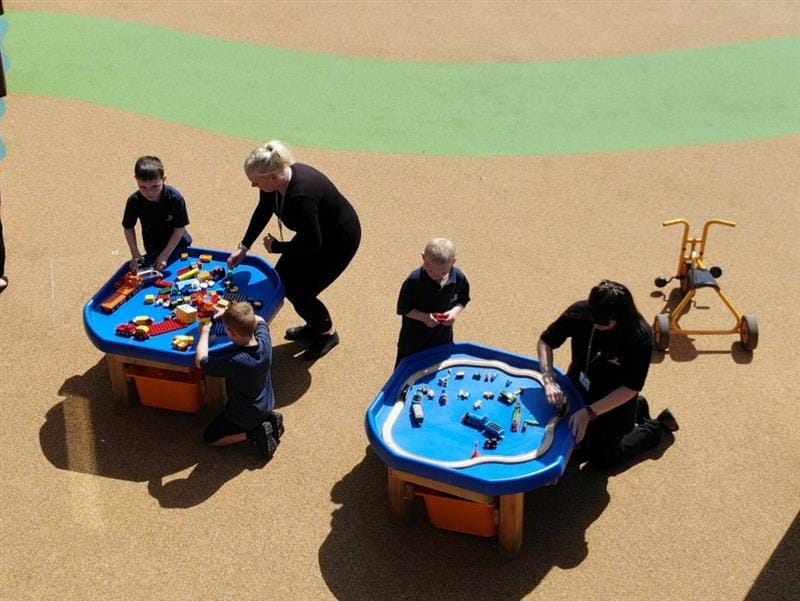
Practitioners will show and guide children when using small hand tools/construction toys and modelling taking constructions apart including cardboard boxes allows children to see how models are made.
How to set up a ‘Construction Area’ in your classroom?
Gathering a wide range of building materials and loose parts is a great place to start when developing a construction area. Some of the best construction materials are open ended and inexpensive.
- Tubes – A variety of tubes are a great resource for stacking, colouring, cutting, tearing and sticking. They can be used for buildings and make great chutes.
- Stones – Stones can be stacked, arranged to make patterns, painted and grouped. They make brilliant pathways and stepping stones.
- Logs and tree pieces – Logs can be stacked and used to make some amazing structures. As these items are not uniform kids begin to learn about size, shape and texture which adds a wonderful sensory element to play.
- Twigs and sticks – These natural items can be compared, arranged in order of size, used to create frames for pictures or to create structures with clay or play dough. Sticks make great frameworks when stuck together, pupils could make structures for plants to grow up.
- Crates and planks of wood – Larger items work really well in the outdoor environment where children learn to work as a team and develop their ideas. Children learn to share and cooperate as they make decisions about their rocket or treehouse.
- Boxes – A selection of different sized boxes make a great resource for creating new items when combined with different materials.
If you wanted to incorporate pretend play or fantasy play during your constructive play session, you could provide some builder's outfits, a hard hat and other materials to help kids bring their imaginations alive! Doing this can create an exciting outdoor role play area, providing multiple benefits.
Create a ‘Tinker Table.’
Setting up a ‘Tinker Table’ can be a really beneficial classroom space. Pentagon’s Construction Table would be ideal for this as it provides a designated area for construction play inside or outside the classroom and resources are easily stored underneath which allows pupils to self-select.
You could include items such as play dough, nuts, bolts, washers, springs, padlocks, shells, beads or seeds depending on your current topic.
Pupils will improve their fine motor skills by handling and manipulating the objects and use words such as twist, turn, pull, screw and place. Shapes and containers that fit together and can be stacked such as plastic cups can provide endless building opportunities.

Take Construction Play Outdoors
In the outdoor environment construction play takes a larger scale. Providing a variety of boxes, foil blankets, different materials, and camouflage netting will inspire children to create caves and forts using Pentagon’s Den Making Posts and get the benefits of den making.
Having access to real life photographs of building such as bridges, towers, local landmarks or even the Sphinx can inspire children and improve geographical knowledge.
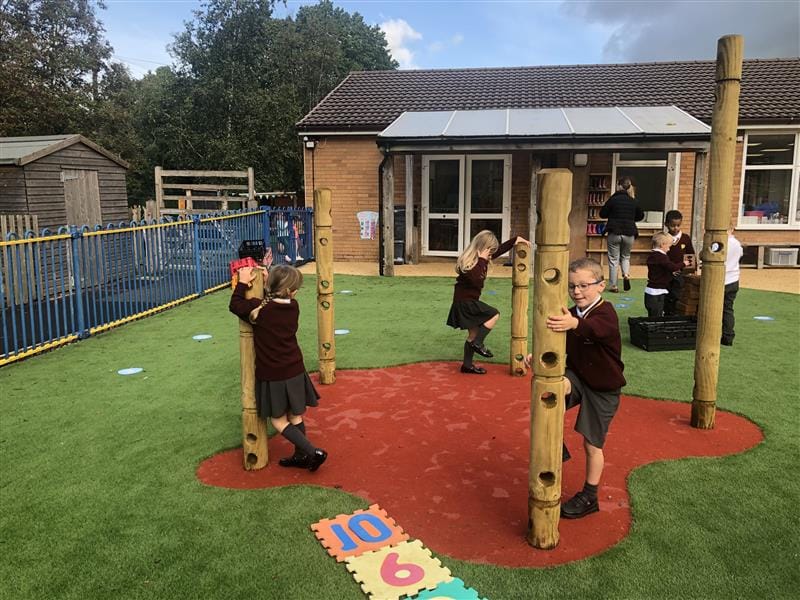
A box of construction toys including tape measures, trundle wheels, sand timers and numbered blocks provides opportunities for children to measure the height and width of their creations or to find out who can build a tower in the quickest time?
Hard hats, safety goggles and tools will encourage fantasy play and small world play within the construction area and allow a child to fully immerse themselves in imaginary play.
.jpg)
It may be useful to display some question/challenge prompts in the construction area to act as starting points. These could include: Is it possible to include a window in your building? What can you build with 12 bricks? Can you build a house for the teddy? How tall can you make the beanstalk before it falls down?
Sometimes pupils may feel disappointed when their creation inevitably needs to be deconstructed. Taking a photograph and adding this to a classroom display or booklet shows children that their work is valued and can be a useful reference point for others to follow which can also be shown to parents.
It's important to note that not only will the kids get the benefits from the construction play, but they'll also recieve the benefits of outdoor play in early years.
.jpg)
Let Your Children Engage With Construction Play Today
Children just love to build and to create. A variety of materials, construction toys/tools and adequate space to build allows a child's imagination to open up whilst they make sense of the world around them.
Pupils become ‘the experts’ when building their constructions which can be as tall, long or complicated as they choose.
As young children explore materials they will begin to wonder and question: What will happen if I put this here? How long do I need to make it? If I add water what will this look like?
Quite often a child can become deeply engaged when constructing, they persevere to create their particular version because they want to make a ramp for their cars or a set of binoculars to use outside. Concentration can increase and kids can spend long periods of time engaged in play.
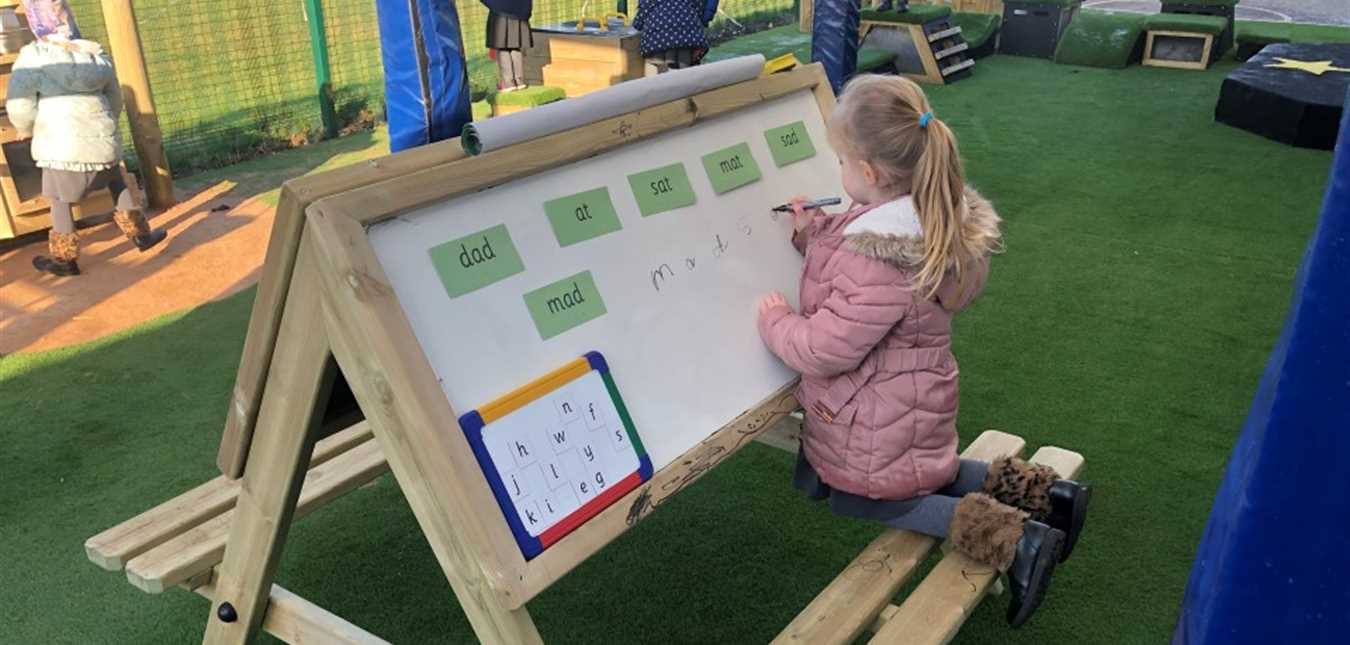
.JPG)
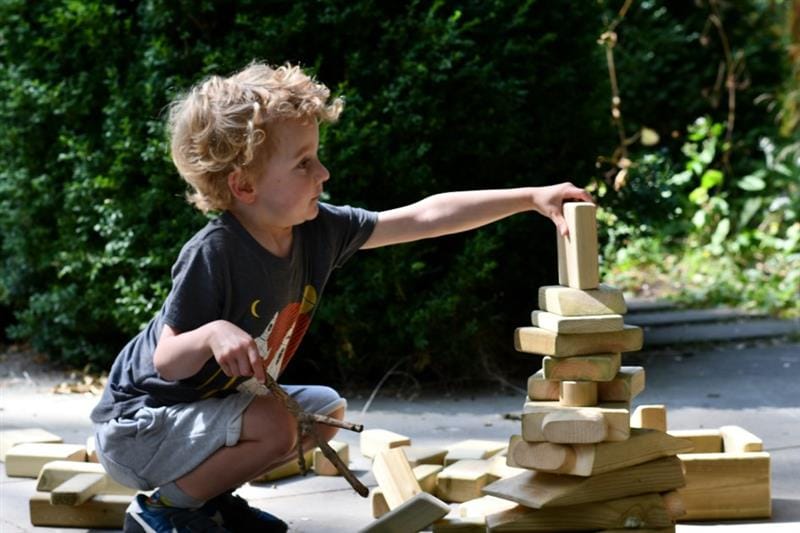
.JPG)

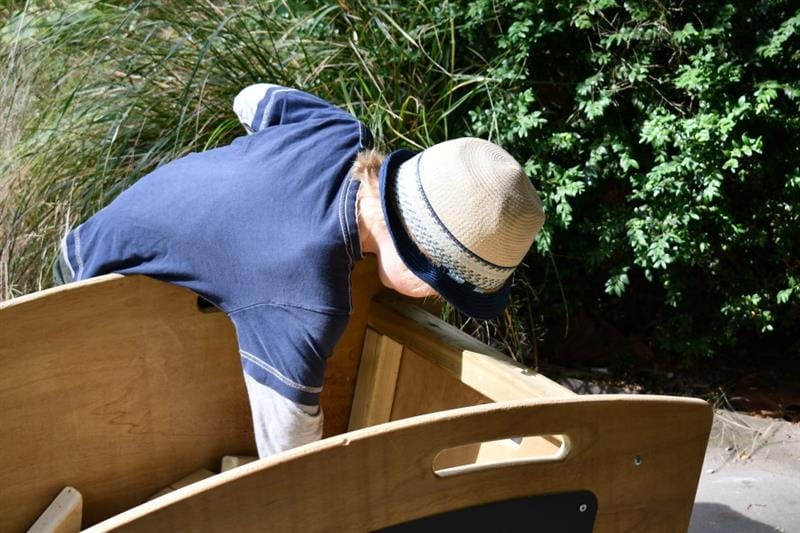


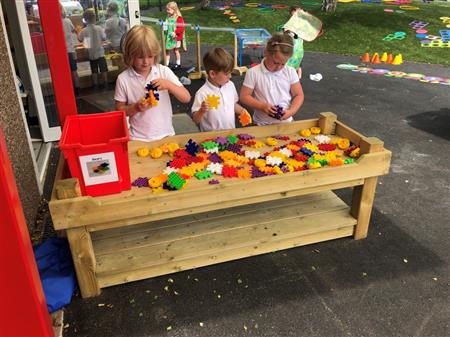
.JPG)
